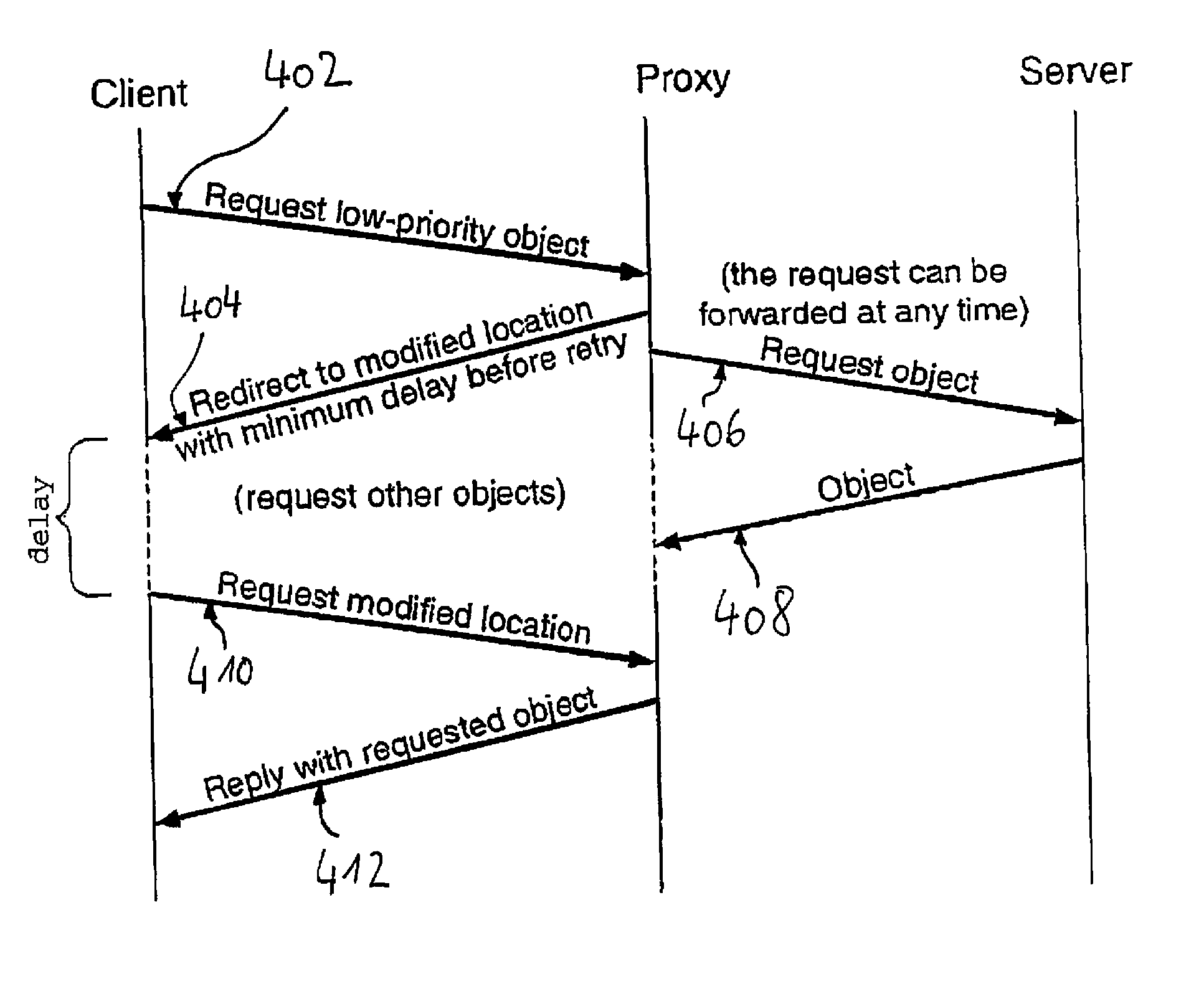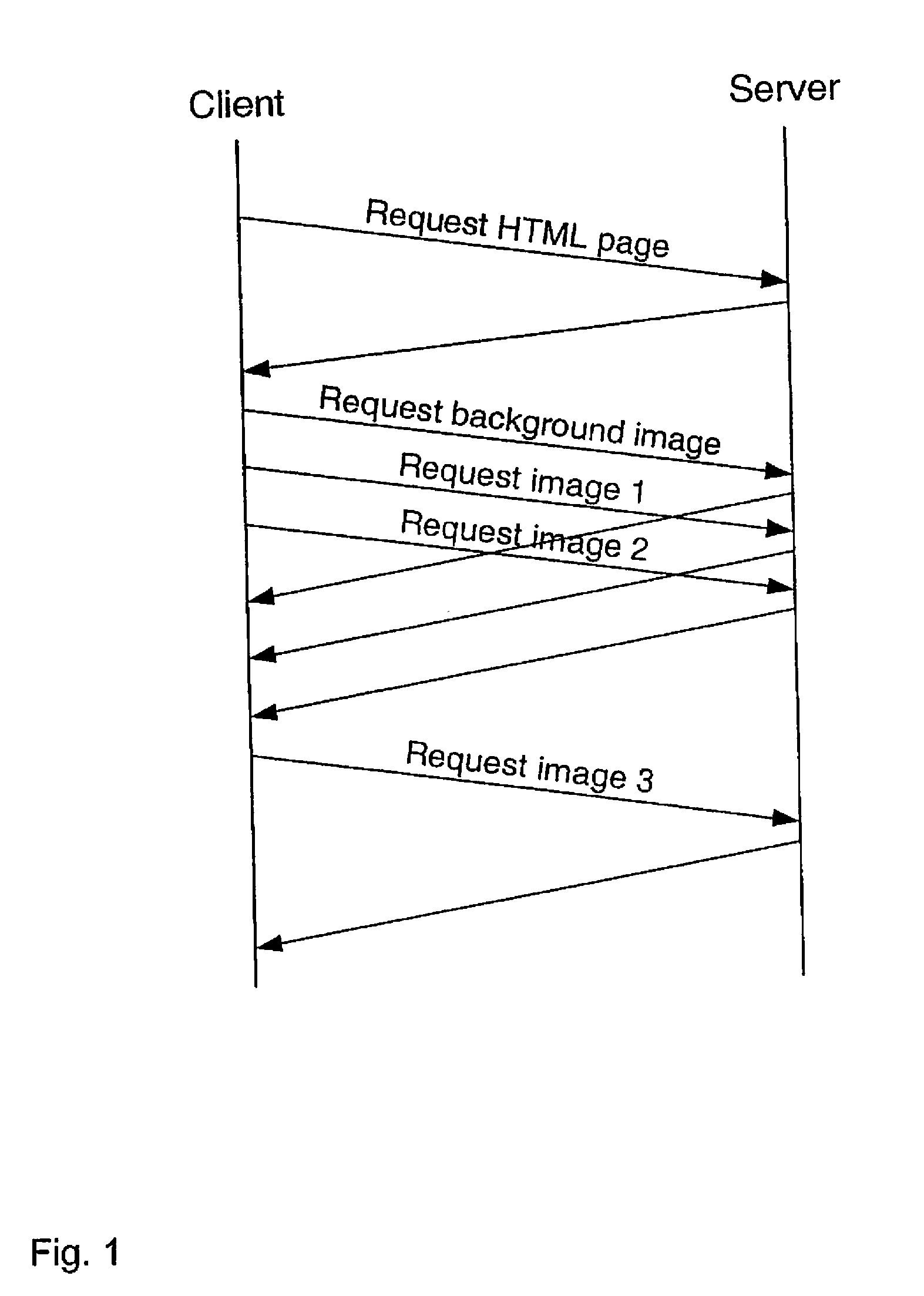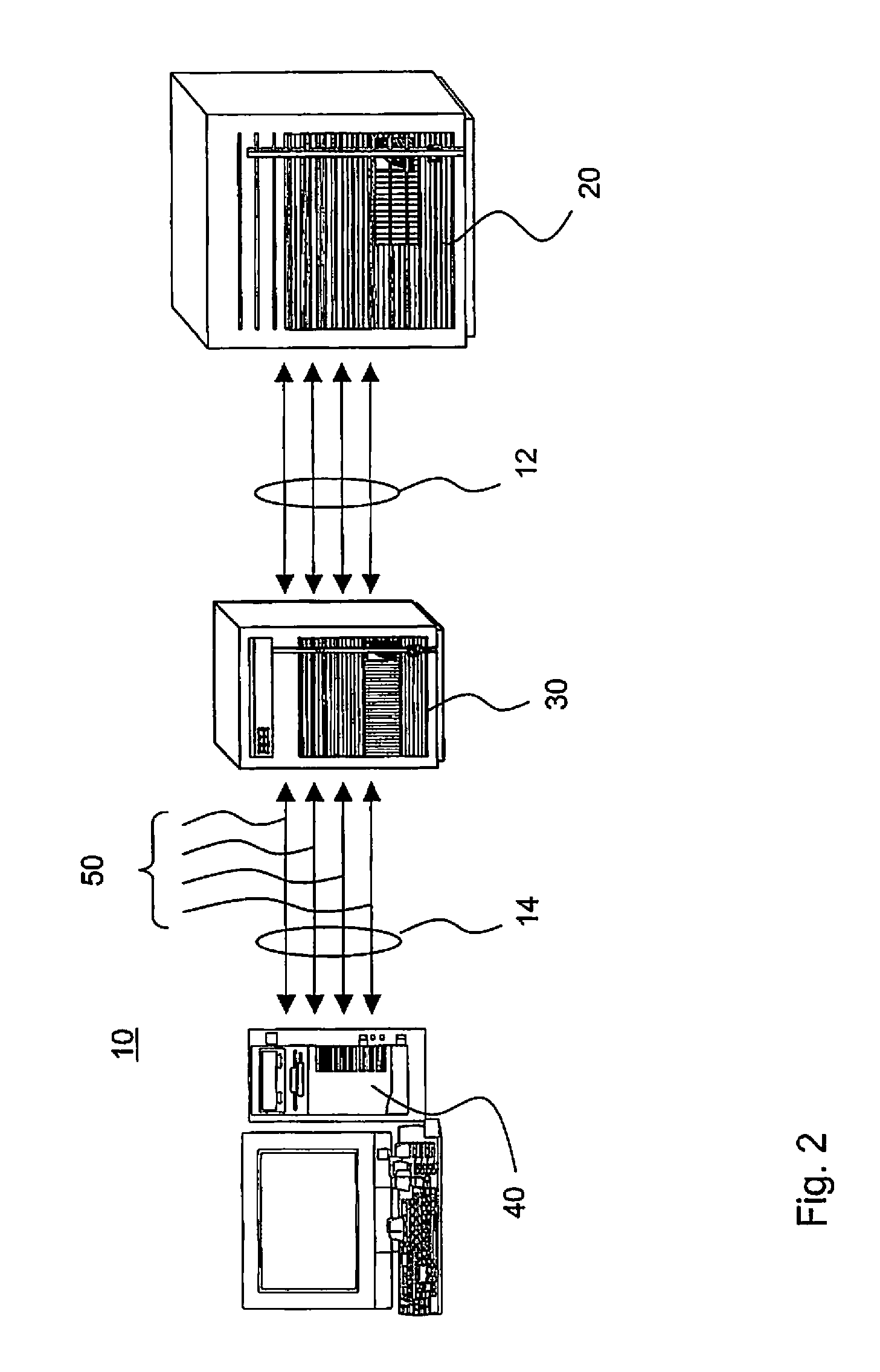Object transfer control in a communications network
a technology of object transfer and communication network, applied in the field of communication network, can solve the problems of accelerating the transfer of other objects, affecting and affecting the significance of objects of lesser significance, so as to achieve the effect of improving the overall transfer of objects
- Summary
- Abstract
- Description
- Claims
- Application Information
AI Technical Summary
Benefits of technology
Problems solved by technology
Method used
Image
Examples
Embodiment Construction
[0039]Although the present invention can be practiced in any communications network in which a request-based object transfer via an intermediate component is performed, the following description of preferred embodiments is exemplarily set forth with respect to the transfer of HTML code in accordance with the HTTP protocol over the WWW. In principle, transfer protocols different from HTTP, like the wireless WAP transport protocol or some Remote Procedure Call (RPC) mechanisms, and codes different from HTML, for example the WAP Markup-Language (WML) or any derivatives of the eXtensible Markup-Language (XML), could be utilized as well. Furthermore, although the following description mainly concerns an object transfer from a server to a client, the object transfer could be performed between any two or more network components.
[0040]In FIG. 2, a block diagram of a network system 10 according to the invention is depicted. As becomes apparent from FIG. 2, the network system 10 comprises a f...
PUM
 Login to View More
Login to View More Abstract
Description
Claims
Application Information
 Login to View More
Login to View More - R&D
- Intellectual Property
- Life Sciences
- Materials
- Tech Scout
- Unparalleled Data Quality
- Higher Quality Content
- 60% Fewer Hallucinations
Browse by: Latest US Patents, China's latest patents, Technical Efficacy Thesaurus, Application Domain, Technology Topic, Popular Technical Reports.
© 2025 PatSnap. All rights reserved.Legal|Privacy policy|Modern Slavery Act Transparency Statement|Sitemap|About US| Contact US: help@patsnap.com



